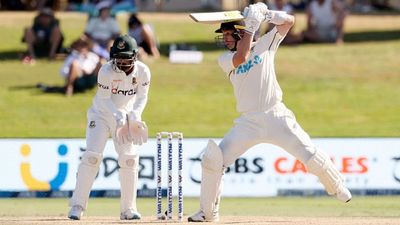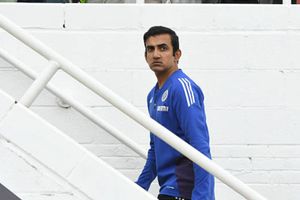One does not often get to see seven runs being scored in one ball but New Zealand opener Will Young managed to do exactly the same against Bangladesh in the second Test match, being played in Christchurch.
It all happened in the first over of the second session when the Kiwis were batting at 95 without losing a wicket. On the sixth ball of Bangladesh pacer Ebadot Hossain’s over, Young played a shot that produced an outside edge and went straight to the first slip. What could have been a routine catch for the fielder standing at first slip turned out to be a hilarious error after the fielder standing at the second slip decided to jump for a catch but eventually he failed and the ball took a mighty deflection and went towards fine leg, in the meantime Young and his partner- Tom Latham completed three runs.
Four more runs
But the humorous part does not end there. To the utter humiliation of Bangladesh cricketers, the fielder first threw the ball to the wicketkeeper Nurul Hasan and in order to get a run-out, the wicketkeeper threw the ball to the bowler’s. And surprisingly, everyone missed to grab the ball as it went racing down to the boundary ropes producing in four more runs as overthrow for the hosts.
Previously, Bangladesh skipper Mominul Haque won the toss and elected to bowl first but decision seemed to go against the visitors as the Kiwis scored 148 runs in their opening partnership.
Superb batting display
Opener, Young was dismissed after scoring a half-century (54 off 114 balls). Bangladesh bowler Shoriful Islam earned the crucial breakthrough after a drive shot played by the batsman produced an edge and to the fielder standing at point.
Devon Conway was the next man to come down to bat and he went on to score a half-century as well. At the time of reporting, Conway was batting at 72 off 123 deliveries.
New Zealand’s other star opener, Tom Latham maintained his prolific form after he managed to notch another hundred in the series. At the time of reporting, Latham was batting at 171 off 254 balls. His innings was comprised of 25 boundaries.
ADVERTISEMENT










